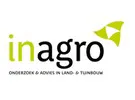Waste streams from fruit and vegetables grown with polypropylene (PP) ropes and clips are often incinerated or composted in neighboring countries or regions with less stringent quality standards. How can a cycle that is both high-quality and economically viable be closed locally in Flanders?
Partners Vlaco and OVAM, along with various stakeholders from the Cmartlife C12.1 project, explored the possibility of expanding professional composting in Flanders. This aligns seamlessly with the additional valorization paths of the Zero-Waste project, in which Inagro is involved.
Cost-benefit of an alternative scenario
Over the past two years, the Innovation Support Point, in collaboration with Vlaco, has developed and updated a cost-benefit analysis to outline the financial challenges and opportunities associated with transitioning from a traditional scenario (PP to incineration or composting abroad) to an alternative scenario (alternative materials to local composting).
Some findings indicate that in crops where it is difficult to avoid clips (such as tomatoes or high-wire cucumbers), using bio-ropes + metal clips or Qlipr presents a financially advantageous alternative. Furthermore, the use of bio-rope is beneficial for cucumber (traditional), eggplant, and zucchini. For twisted tomato and pepper cultivation, the alternatives are more expensive, and GMO support is needed to break even. An infographic was created for the different fruit and vegetables, presenting the traditional and alternative scenarios, which can be viewed at Inagro.
Quality composting at green and OBA composters is possible
Depending on the composition, there are different disposal/processing paths. Firstly, without binding materials or with biodegradable ropes and clips, the waste streams can soon be composted on their own farm or in collaboration. The legal framework for this is being developed. Secondly, regarding incineration in Flanders: it usually still applies to the greenhouse foliage of tomatoes, cucumbers, and peppers if contaminated with PP ropes and/or clips. Thirdly, processing at professional composters (OBA composter in practice). Fourthly, transporting to neighboring regions or countries (often the Netherlands) for composting in accordance with local legislation. Finally, incorporating greenhouse foliage is not compliant with Vlarem, Vlarema, and/or MAP regulations.
The greenhouse foliage processed externally is considered by OVAM as organic-biological business waste (OBA). Permit-wise, gft or OBA composting is possible, but in practice, it may not always be feasible (due to short composting time, rejection for technical reasons, shortages of processing capacity, etc.).
To further promote locally instead of transporting to incineration or abroad, the partners have developed a proposal to optimize the current legal framework to enable processing by professional green composters. The proposal has not been retained by the involved policy bodies for the time being and will therefore need to be refined and resubmitted at a later date.
For more information:
Inagro
Ieperseweg 87
8800 Rumbeke-Beitem, Belgium
Tel: 051 27 32 00
[email protected]
www.inagro.be
